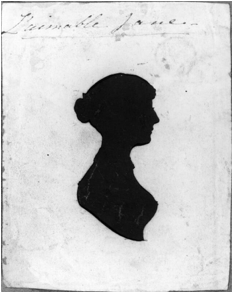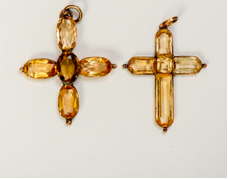Austen and Harry Potter: Riddles and Romance: Austenian plot twists in Harry Potter Part One

Jane Austen was born on the 16 December 1775, almost 250 years ago. The eve of her birthday seems a fitting occasion to take another look at the influence on Harry Potter of the author J.K. Rowling has described as her ‘favourite writer of all time.’ In Harry Potter and the Chamber of Secrets, for example, Ron warns Harry that ‘some old witch in Bath had a book that you could never stop reading! You just had to wander around with your nose in it, trying to do everything one-handed.’ I have long suspected this to be a tongue-in-cheek reference to Austen – ‘Bath’s most famous resident ’TM – and the addictive joy of her works.
Recently, when I was invited on Potterversity to discuss Austen in Harry Potter with Katy McDaniel and Emily Strand. Katy brilliantly pointed out that there is another reason for thinking that this is indeed a nod to Austen. Rowling has used this very phrase – needing ‘to do everything one-handed’ – to describe her enjoyment of reading: “I never need to find time to read. When people say to me, ‘Oh, yeah, I love reading. I would love to read, but I just don’t have time,’ I’m thinking, ‘How can you not have time?’ I read when I’m drying my hair. I read in the bath. I read when I’m sitting in the bathroom. Pretty much anywhere I can do the job one-handed, I read.”
A book belonging to a witch in Bath that you have to read one-handed sounds very much like a nod to the Austen novels that Rowling loves to read in the bath: ‘I read my own favourite books over and over until they fall apart, literally. I’ve gone through three copies of Emma – they get dropped in the bath and the covers fall off.’
The detail from Harry Potter that set me off looking for Austen allusions – and indeed which started the journey that became my book Literary Allusions in Harry Potter – was the name of Filch’s cat. Mrs Norris is a sufficiently unusual name that it is a nod to Austen’s Mrs Norris: the heroine’s evil aunt in Mansfield Park. The choice of ‘Mrs Norris’ as the name for Filch’s cat marks her out as vindictive and watchful but also signals that she and her owner, just like Austen’s Mrs Norris, are so caught up in policing petty rules – Filch’s list of forbidden objects ‘comprises some four hundred and thirty-seven items’ – that they neglect the children those rules were intended to be safeguarding.
A major connection between Austen and Rowling’s works is their shared authorial delight in ‘pull[ing] the wool’ over their readers’ eyes. A love of riddling intrigue is part of both writers’ intensely playful style – on display, for example, in Austen’s joyous early satire, ‘The History of England’ told by ‘a partial, prejudiced, & ignorant historian’. Austen wrote this history with her sister Cassandra (who provided the illustrations) such jokes and word games were an important part of the Austen family dynamic.
Charades, for example, formed a popular pastime in the Austen family – Jane’s mother (Cassandra, like Jane’s elder sister) was particularly skilled at them. Some of the riddling poems they wrote for each other were ‘noun verses’ – the name for a reply poem in which the writer was given a riddling question along with an unrelated noun, and had to include the latter in their answer. James Edward Austen-Leigh (Jane’s nephew), for example, was given the question ‘What becomes of all the pins in the world?’ and had to include the noun ‘Boar’s head’ in their answer (a tavern in Shakespeare’s Henry IV part I which is, I think, the source for The Hog’s Head in Harry Potter! He wrote the answer:
Distressing thought! Where – where – who knows,
Do shades of pins defunct repose?
The pin that fastened Jael’s tent
And through Sisera’s temples went?
Pins, numerous once, now scarce, and rare,
Which decked the Roman matron’s hair?
Pins mediaeval somewhere sleep,
Used at the ‘Boar’s head’ in Eastcheap;
And still, as older grows the world,
Pin after pin to fate is hurled.
Who knows? I end as I begin:
I neither know nor care a pin!– David Selwyn, ed., Fugitive Pieces : Trifles Light as Air. The Poems of James Edward Austen-Leigh, nephew and biographer of Jane Austen (Winchester: Jane Austen Society, 2006), 99.
The starter riddle for this verse – ‘What becomes of all the pins in the world?’- is enjoyably close to one of the Ravenclaw door’s riddles (‘Where do vanished objects go?’) while another of Austen’s ‘Charades’ (a form of riddle in which each syllable must be solved separately) which appears in Emma seems to be a source for the Sphinx’s riddle in Goblet of Fire.
The literal riddles in Emma and Harry Potter stand as objective correlatives to the riddling plots of the novels and, as Rowling has said ‘I have never set up a surprise ending in a Harry Potter book without knowing I can never, and will never, do it anywhere near as well as Austen did in Emma.’ These conundrums are themselves clues that the books in which they occur have a twist in the tail. This happens most clearly in Chamber of Secrets when an anagram reveals who the character called ‘Riddle’ really is. But it is true in Philosopher’s Stone, likewise, for the first explicit riddle of the series – ‘Brilliant,’ said Hermione. ‘This isn’t magic – it’s logic – a puzzle’ – holds the key to the novel’s main plot twist. This logic puzzle is Potions-based and therefore it has been set by Snape, which means that it was Quirrell who provided the troll – creating the strong implication that it is Quirrell who has ‘a special gift with trolls’ and therefore that it was he who let the mountain troll in (aka it is he who is after the Philosopher’s Stone). If, when the reader meets the Potions puzzle they were to think about the deeper puzzle of the book, they would get a strong hint about its solution.
Austen regularly makes the seemingly incidental things that happen to her characters mirror their emotional futures. She creates a form of plot-based symbolism in which things that happen earlier in the novels provide clues for the reader: for example when Emma’s misreading of Mr Elton’s riddle primes us to recognise her wider misreadings. The most famous example occurs in Mansfield Park when Maria and her fiancé, Mr Rushworth, reach a locked gate. While Mr Rushworth goes in search of the key Maria decides to climb over the gate with Mr Crawford – a clue to the fact that she will later elope with him. In a happier foreshadowing, Fanny is given an amber cross by her beloved brother and both Mr Crawford (the man she does not want to marry) and Edmund (the man she does) give her a chain for the cross. To Fanny’s delight, Mr Crawford’s chain does not fit through the loop of the cross while Edmund’s does. It is a promise that Fanny will get the man she desires.

The crosses which inspired Fanny’s cross – bought for Jane (on the right) and Cassandra (on the left) by their brother
This same device is used, rather more subtly, in Emma when Harriet and Mr. Knightley take a walk together in the ‘delicious shade of a broad short avenue of limes.’ The avenue looks as though it is a real path with a destination, but it is not: ‘It led to nothing; nothing but a view at the end over a low stone wall with high pillars, which seemed intended, in their erection, to give the appearance of an approach to the house, which never had been there.’ Emma later fears that Mr Knightley has fallen in love with Harriet and his choice to walk alone with her on this path is one of the events that feeds her fear. But Emma’s jealousy of Harriet, like this lime walk, is a spurious path leading nowhere: Mr Knightley’s journey with Harriet leads only to a dead end.
This technique of leaving physical clues in the plot – objects that symbolize the outcome of the story – is shared by Harry Potter, and it seems possible that it is a technique learned from Austen. In Goblet of Fire (Ch 26), for example, Harry, Ron, and Hermione practice the Banishing Charm with cushions, dissecting the mysterious behavior of Snape, Moody, and Crouch as they do so. Ron’s inaccurate guess that Moody is there to keep an eye on Snape is mirrored by his cushion flying way off target and knocking off Parvati’s hat, while Hermione’s reminder that they are often wrongly suspicious of Snape is supported as her cushion drops neatly into the box. When Ron criticizes her insight about Crouch’s odd behavior his cushion flies out the window; while her critique that he just wants to think badly of Snape, while in reality, Snape has nothing to do with Harry’s name having been put in the Goblet of Fire is spot on (and so is her cushion). Harry’s question about Snape (‘I just want to know what Snape did with his first chance if he’s on his second one’) turns out to be a crucial plot point, and his cushion – to his surprise – lands in the box. Similarly, when the twins throw snowballs at Quirrell’s turban or Ron throws-up slugs over Tom Riddle’s name when he’s polishing the Special Award for Services to the School it expresses both the natural antipathy of the Weasleys towards Voldemort and a clue as to where he is hiding. When Hermione wonders how Rita Skeeter knew that Viktor Krum had asked her to visit him over the summer she is pounding up – you’ve guessed it – beetles in a Potions class.
Freudian readers will find all three Austen examples above – with their locked gates, chains fitting through rings, and paths without gates – freighted with sexual symbolism. Some of the examples in Harry Potter, likewise, point to the outcome of the hero’s love life. When Cho and Ginny are discussing what to name the newly formed Anti-Umbridge league, Cho suggests ‘the Defence Association?… The DA for short’ and Ginny takes her suggestion but changes its meaning: ‘Yeah, the DA’s good,’ said Ginny. ‘Only let’s make it stand for Dumbledore’s Army.’ When Cho and Ginny face each other on the Quidditch field it is Ginny who will likewise win the Snitch. Just as with Austen’s blocked path, locked gate, and necklace going or not going through the ring of the heroine’s pendant, these are clues about the romantic future of the protagonist.
Ginny is going to snatch the Seeker as surely she has pocketed the Snitch.

